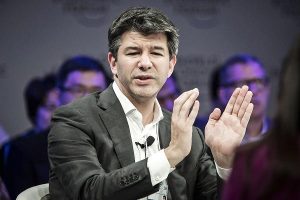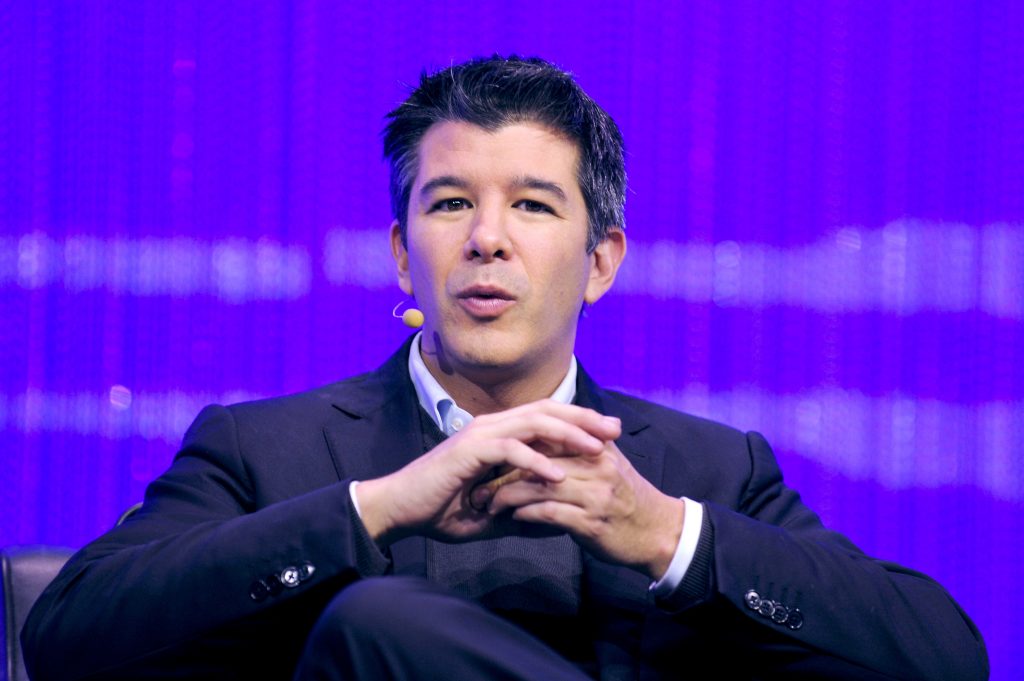The chief executive of Uber was holding a regularly scheduled all-hands meeting on Tuesday at the ride-hailing company’s San Francisco headquarters when he faced an onslaught of questions from upset employees.

Uber was under attack — unfairly, many staff members believed — after people accused the company of seeking to profit from giving rides to airport customers in New York during weekend protests against President Trump’s immigration order.
But there was another matter disturbing the employees: Mr. Kalanick himself. He had joined Mr. Trump’s economic advisory council in December. After the immigration order against refugees and seven Muslim-majority countries, many staff members wondered why Mr. Kalanick was still willing to advise the president.
“What would it take for you to quit the economic council?” at least two employees asked at the Tuesday meeting.
On Thursday, Mr. Kalanick gave his answer, stepping down from Mr. Trump’s economic advisory council. “There are many ways we will continue to advocate for just change on immigration, but staying on the council was going to get in the way of that,” Mr. Kalanick wrote in an email to employees obtained by The New York Times.
Mr. Kalanick’s exit from the advisory council underscores the tricky calculus facing many Silicon Valley corporate chieftains who try to work with the new administration. On one hand, many tech executives have openly tried to engage with the president, a path that is typically good for business. Yet Mr. Trump’s immigration order has been so unpopular with so many tech workers — many of whom are immigrants themselves and who advocate globalization — that they are now exerting pressure on their chief executives to push back forcefully against the administration.
Thirty miles south of Uber’s headquarters, for example, Facebook employees have voiced frustration that Peter Thiel, the billionaire tech investor and adviser to Mr. Trump, still has a seat on the social network’s board. At Google, employees have staged protests against the immigration order. At Twitter’s headquarters, some employees have said they are uneasy about the president’s heavy reliance on their service to send divisive messages.
The tension over continuing to work with Mr. Trump reached a breaking point at Uber because Mr. Kalanick was, until Thursday, one of the most vocal proponents among tech chiefs of engaging with the president. As recently as Saturday, Mr. Kalanick had publicly said in a blog post that the best route forward was to have “a seat at the table.” He had added, “We partner around the world optimistically in the belief that by speaking up and engaging we can make a difference.”
Outside of the internal pressure, Uber faced other fallout from Mr. Kalanick’s stance. More than 200,000 customers had deleted their accounts.
In addition, Uber rivals had seized the moment to attack the company and bolster their own businesses. The New York Taxi Workers Alliance sent emails to the news media calling attention to Uber’s ties to Mr. Trump, and organized a protest at Uber’s New York office for Thursday. Lyft, another ride-hailing service, pledged to donate $1 million to the American Civil Liberties Union and has seen its app shoot toward the top of the download charts.
Uber drivers, many of them immigrants who work for the ride-hailing company on a freelance basis, were also upset.
“There would be no Uber without immigrants,” said Jim Conigliaro Jr., founder of the Independent Drivers Guild, an organization that represents and advocates protections for nearly 50,000 Uber drivers serving New York City. “As a company whose success is built on a foundation of hard work by immigrant workers, Uber can and should do better to stand up for immigrants and their workers.”

